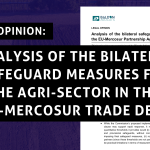The European Investment Bank (EIB) is being reviewing its Emissions Performance Standard (EPS) in 2017. Its EPS is part of the EIB Energy Lending Criteria1 adopted in July 2013, and set at a level of 550 g CO2/kWh.
The EPS review is a critical opportunity for the EIB to align its energy portfolio with the Paris Agreement. It is also a crucial credibility test before the review of the full EIB Energy Lending Criteria in 2018. After the EIB EPS was set up in 2013, the game-changing UNFCCC Paris Agreement was signed by 195 countries and ratified. The agreement sets out a global action plan to “hold the increase in the global average temperature to well below 2 °C above preindustrial levels and to pursue efforts to limit the temperature increase to 1.5 °C above pre-industrial levels”. The Paris Agreement is more ambitious than previously agreed climate targets, and thus requires a step change for adequate implementation.
In addition, its Article 2-1 (c) highlights the need to make “finance flows consistent with a pathway towards low greenhouse gas emissions and climate-resilient development” – in other words, to align financial flows with the well below 2°C climate target.
Since the EIB set up its initial EPS in 2013, the context has radically changed:
– The Paris Agreement is a game changer and it requires more efforts;
– Climate science is tighter than ever; the IEA stated that the world needs to reach an average of 100 g CO2/kWh for new power generation in 2035;
– Renewable power is becoming more available, competitive and affordable every day;
– The EU is discussing mandatory EPS in two regulations for both new and existing fossil-fuel fired plants;
– In the period 2013-2016 the EIB supported fossil-fuel fired power plants that are far below the EIB EPS level, with two exemptions allowed by the EIB Energy Lending Criteria.
On these bases, our recommendations are as follow:
• The EIB should set its new EPS level at 200 g CO2/kWh in order to send a strong signal to both power industry and investors.
• The two exemptions to the EPS in the EIB Energy Lending Criteria remain applicable, to allow flexibility in exceptional cases. In such cases the EIB should clarify and strengthen the justification provided.



